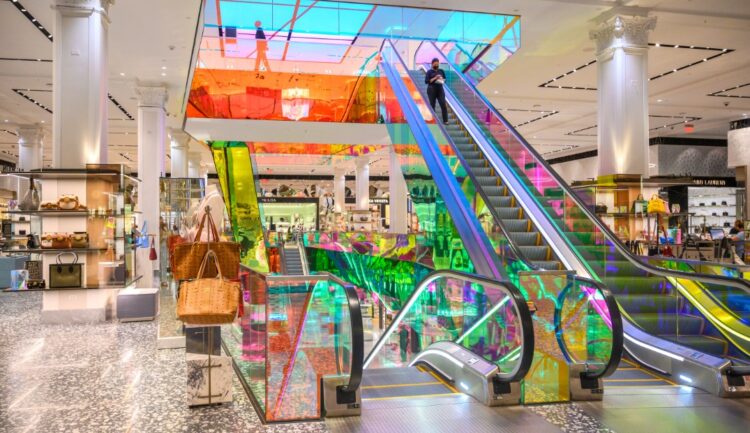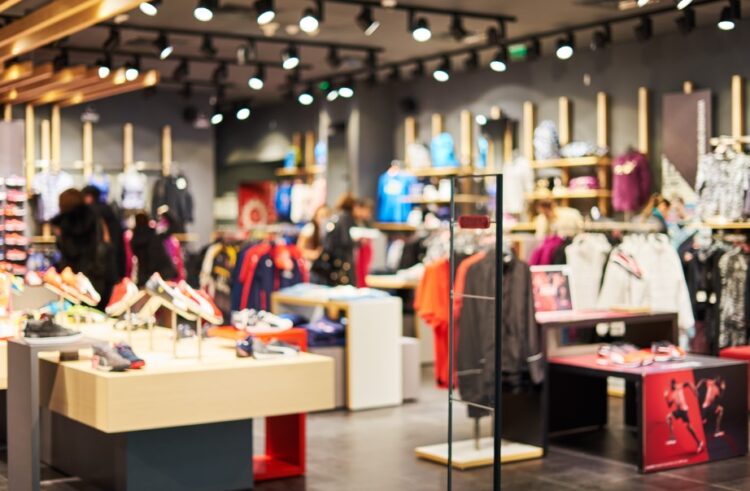Retail is a ubiquitous term in today’s businesses, yet many may wonder, “What is the meaning of retail”? At its core, it revolves around the direct sale of goods or services to the end customer. Whether you walk into a brick-and-mortar store, browse products online, or purchase from a pop-up shop in a bustling city street, you are engaging in a retail transaction.
So, what distinguishes a retail business? A distinguishing feature is that it’s designed for the final consumer and not for further resale or processing. When you hear about “what is a retail company,” it typically refers to a business entity that sources products from suppliers or manufacturers and then sells them directly to consumers, whether it’s a single store or an expansive chain.
The retail industry has witnessed a dramatic transformation in recent years. The rise of online shopping has given customers a plethora of choices, shifting the focus from just selling products to delivering an unparalleled shopping experience. Retailers today prioritize brand presence, customer service, and even custom retail software development to ensure a seamless and personalized shopping journey for their patrons.
With such diverse avenues, from physical stores to digital platforms, the retail domain continues to evolve, boosting in-store shopping experience using AI, while also keeping the customer at its heart. As we delve deeper into this article, we will explore the various facets that make it a dynamic and essential part of our daily lives.
Bridging Buyers and Sellers

Diving into the intricacies of “what is retail business”, it’s essential to understand how the retail model functions at its most basic level. Retail primarily serves as the bridge between buyers (consumers) and sellers (retailers), acting as the final touchpoint in a product’s journey from production to purchase.
The process begins when a retailer purchases goods or products, either from a manufacturer or a wholesaler. These goods are then marked up in price and displayed in stores or online platforms, ready for the end customer to browse, select, and eventually buy. This direct interaction between the retailer and customer fosters an opportunity for brands to cultivate loyalty, gather feedback, and tailor their offerings based on consumer preferences.
Several advantages underpin this business model:
- Direct feedback loop. Retailers can gain immediate insights into customer preferences, dislikes, and buying behavior, allowing them to swiftly adjust their product range or marketing strategies.
- Brand building. A store, be it physical or online, serves as a brand’s direct representative. Retailers can curate experiences, offer personalized services, and foster trust, thereby strengthening brand identity.
- Diverse revenue streams. Retailers have the flexibility to diversify their offerings, introduce private labels, or incorporate value-added services, expanding potential revenue channels.
- Enhanced customer experience. Through custom software development, retailers can now provide personalized shopping experiences, loyalty programs, and streamlined purchase processes, enhancing customer satisfaction and retention.
By prioritizing the direct interaction between the customer and the brand, retail serves as an ever-evolving, customer-centric domain that combines commerce, experience, and brand loyalty into a cohesive business model.
Diverse Avenues of Retail

This industry is vast and multifaceted, encompassing a range of business models and structures tailored to specific market demands and consumer preferences. Let’s delve into some of the predominant types:
1. Brick-and-Mortar Stores
Traditional retailers ─ these are physical stores where customers can visit, browse products, and make purchases in person. Examples include department stores, specialty shops, and convenience stores.
2. Online Retailers
E-commerce platforms ─ these digital stores allow customers to shop from the comfort of their homes. Through the power of the internet, retailers can reach a global audience, offering everything from clothes to electronics. Custom software development further enhances user experience on these platforms.
3. Discount retailers
Bargain stores ─ these retailers primarily focus on offering products at prices lower than the market average. They attract budget-conscious shoppers by providing value deals, clearance sales, and bulk purchase options.
4. Warehouse Retailers
Bulk purchase stores ─ these are large spaces that sell products in bulk, often at discounted rates. Customers typically pay an annual membership fee to shop at these establishments.
5. Pop-Up Shops
Temporary retail spaces ─ these are short-term sales spaces that provide a unique shopping experience. They’re often used for product launches, seasonal goods, or to test a market before committing to a permanent space.
6. Direct-to-Consumer (DTC)
Manufacturer to buyer ─ bypassing the traditional retail chain, DTC brands sell directly to consumers. This model has gained traction in recent years, allowing manufacturers to control the entire customer journey, from production to purchase.
Essential Features for a Flourishing Retail Business

Establishing a thriving business is no small feat. The dynamic nature of the industry, coupled with ever-evolving consumer preferences, demands retailers to be agile, innovative, and customer-centric. Let’s explore some pivotal features that can drive success in the retail sector:
1. Market Research and Analysis
Understanding your audience ─ a thorough market analysis helps identify target demographics, understand their needs, and spot potential market gaps.
2. Product Quality and Variety
Diverse and quality offerings ─ meeting the expectations of consumers in terms of product quality, variety, and uniqueness can set a retailer apart in a crowded marketplace.
3. Customer Experience
Engaging and memorable ─ whether in-store or online, curating a seamless, enjoyable, and efficient shopping experience is paramount. It’s here that custom software development plays a crucial role, enabling personalized shopping journeys, efficient inventory management, and real-time customer support.
4. Strategic Location
Accessible and attractive ─ for brick-and-mortar retailers, the store’s location can make or break its success. High footfall areas and easily accessible locations enhance visibility and drive sales.
5. Digital Presence
Omni-channel strategy ─ today’s consumer shops across multiple channels. Ensuring a robust online presence, paired with an effective e-commerce platform, helps retailers tap into a broader customer base.
6. Custom Retail Software Development
Tailored to needs ─ investing in custom software allows retailers to meet specific business requirements, streamline operations, and offer personalized experiences. From inventory management systems to CRM tools, technology is reshaping the landscape, emphasizing the significance of staying updated with the latest software solutions.
7. Effective Marketing and Branding
Visibility and recall ─ consistent branding, coupled with strategic marketing campaigns, helps retailers stay top-of-mind for consumers.
In a nutshell, success hinges on a delicate balance of understanding market dynamics, prioritizing customer needs, and leveraging technology, especially custom software development, to stay ahead of the curve. As retail continues to evolve, those willing to adapt and innovate are the ones destined for success.

Conclusion
Retail, in essence, is more than just the transactional exchange of goods and services. It’s a symphony of experiences, a dance between brands and consumers, and an ever-changing tableau reflecting societal trends, technological advancements, and economic shifts. Whether one engages with a brick-and-mortar store, an e-commerce platform, or a hybrid of both, the objective remains clear: delivering value and building lasting relationships.
The emphasis on software development is a testament to the industry’s drive towards innovation, enhancing customer experiences and operational efficiencies. It’s not just about selling a product; it’s about creating memorable journeys, understanding consumer needs, and staying agile in an unpredictable marketplace.
As we conclude our exploration into the world of retail, one truth stands paramount: success in this industry hinges on adaptability, foresight, and a relentless focus on the customer. In the intricate dance of retail, those who lead with insight, innovation, and integrity are poised to thrive in the narrative of commerce.
 Hi Boox Popular Magazine 2024
Hi Boox Popular Magazine 2024



